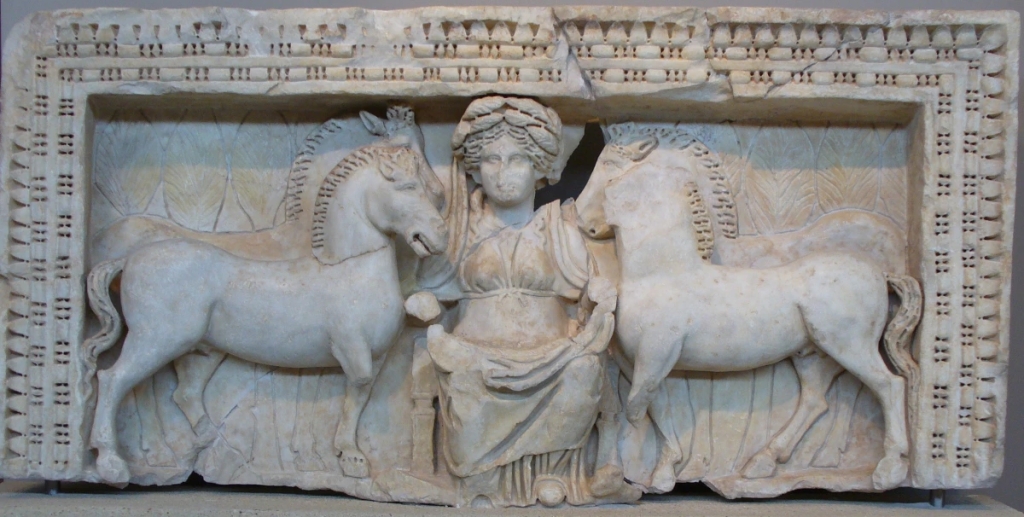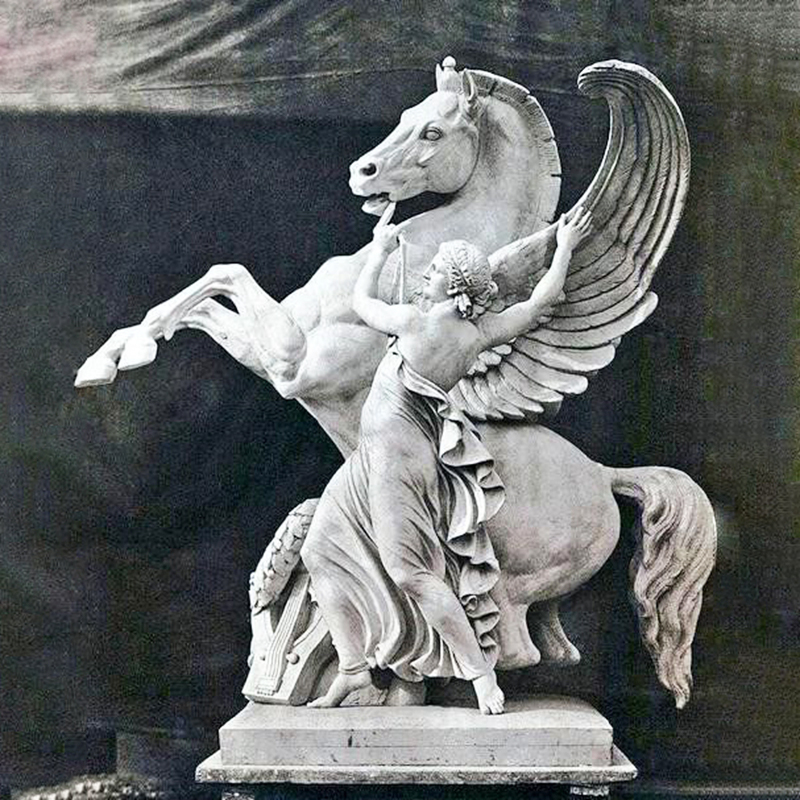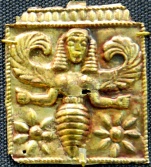The worship of Isis is one of the most important examples of religious syncretism in the world. Whenever the topic of syncretism arises, you will inevitably find a discussion of Isis included.
When it comes to religion, talking about syncretism often centers on whether it is a good thing or a bad thing.
But maybe, syncretism just is—unless a culture or religion is completely isolated. Because anytime peoples and cultures and religions encounter each other, there has always been—among at least some of those peoples and cultures and religions—some form of syncretism.
And yes, of course, you’re right; it’s time for a definition. So, what is syncretism?
When we look at the various definitions, we see that it is usually said to be the combining, attempting to unify, assimilating, blending, fusing, reconciling, harmonizing, mixing, and other similar terms, the various aspects of two or more religions or Deities. Sometimes, religious syncretism is called theocrasia, Greek for “God-mixing.”
At the time of the rise in the popularity of the worship of Isis, interchanges between Egyptian, Greek, and Roman cultures— trade, technologies, philosophies, and yes, spiritualities—were also flourishing.
The influence of those cultures upon each other is often given as a primary example of syncretism on a broader scale. The ancient Egyptian city of Alexandria is an example of a highly syncretic—or we might say, multicultural or diverse—city. Christianity, also developing at about the same time as the spread of Isis’ worship, is another example of a syncretic worship, both in its origins and in its much later expressions, as it absorbed and transformed many of the Pagan traditions it encountered, forcibly or not.
Those who consider religious syncretism bad generally point to a “watering down” of the original tradition; there is also a legitimate concern with appropriation. Those who say religious syncretism is good generally associate it with positive innovation in religion rather than corruption. Others suggest that we retire the term entirely, because this kind of mixing is simply inevitable. Yet others prefer to retain the term since studying how it happens is valuable in researching the development of many of the world’s religions.
Interestingly, it may have been the Greek priest Plutarch—who wrote down a Greek narrative version of the Egyptian myth of Isis and Osiris—who coined the term syncretism. He used it to describe how the various Cretan tribes came together as one when faced with external threats. So, for him, it was positive mixing toward a greater good for Crete.
Syncretism was one of the ways Isis gained many of Her 10,000 names. Yet this all started within Egypt itself.
Those of you who have been following along with this blog already know how the Egyptian Deities are liable, at most any time, to morph into each other, to combine with each other, or to appear as each other. It is—as I have said so many times that you’re tired of reading it—one of my favorite things about the ancient Egyptian conception of the Divine. It is fluid. It can change. It can show Itself to us in myriad forms. For me, this fluidity is a genuine reflection of the Divine nature.
Egyptian combinations of Deities could demonstrate similarity: Isis-Hathor. Another might enable a Deity to express power in a specific way: Isis-Sakhmet. Mostly, in Egypt, Goddesses could flow only into other Goddesses, Gods into other Gods. Isis is unusual in that She could combine with Gods as well. We find an Isis-Anubis in the later mythological texts, as well as an Isis-Horus.
In this way, Isis could be almost any other Egyptian Goddess as well as some Gods. We discover many of Her names in the Oxyrhynchus hymn, which gives us Her names and epithets, first within Egypt, then throughout the Mediterranean.
Outside of Egypt, one of the first important Deities Isis is syncretized with is the Greek Great Goddess Demeter. This went as far back as the 5th century BCE when the historian Herodotus declared that Isis IS Demeter and that Isis and Osiris were the only Deities worshiped throughout all of Egypt. (This wasn’t strictly true, but that was his impression.)
The Isis myth, as recorded and interpreted by Plutarch, gives us the perfect example of a syncretic myth.
As Plutarch tells it, the wanderings of Isis include episodes similar to those in Demeter’s story of wandering in search of Persephone. Like Demeter, Isis (in disguise as a human woman) weeps at a spring (in Demeter’s case, a well) and is invited into the royal house to be the nurse of a royal infant. At night, She tempers the child in a fire, making him immortal.
One night, the queen sees this process and, quite understandably, screams bloody murder, thus interrupting the magic and prohibiting her child from gaining immortality.
But let’s go one step further into this particular syncretism. Some Egyptologists believe that this “burning baby” episode may actually have originated in Egypt—with what they call the “burning Horus” formula—and from there it was imported into Demeter’s myth. So, in this case, both cultures were inspired by the other and each added a detail from the other Great Goddess’ myth to their own story.
There are numerous images that show Isis combined with Goddesses other than Demeter from throughout the Mediterranean region. We find Isis-Aphrodite, Isis-Astarte, Isis-Selene, Isis-Sophia, Isis-Artemis, Isis-Rhea, Isis-Fortuna, and many more. Just as She had within Egypt, now Isis flowed into Goddesses far beyond Egypt. So much so that She eventually became THE Goddess to many people, both within and without Her native land.
The human pathos of Isis’ story, Her fierceness in defending both Her husband and Her child, Her powers of resurrection and rebirth, and the magic that always clings to Isis like a potent perfume—all contributed to the spread of Her religion in the Greco-Roman world. People saw Her in their own Goddesses and they saw their own Goddesses in Her, eventually adopting Her as their own. Syncretism.
For today, I’d like to leave you with a syncretic hymn to Isis. It is one of four written in Greek and carved on the temple of Isis-Hermouthis (Hermouthis is a Hellenized form of the Cobra Goddess Renenutet) in the Egyptian Faiyum, where She was paired with the Crocodile God Sobek. The hymn was written by a man named Isidorus; judging by his name, he was at least a devotee. He may have been a native Egyptian who was either given or adopted a Greek name. Some researchers even think he could have been a priest of Isis, but we just don’t know.
Here is one of his four Faiyum hymns to Isis:
O wealth-giver, Queen of the Gods, Hermouthis, Lady,
Omnipotent Agathē Tychē [“Good Fortune”], greatly renowned Isis,
Dēo, highest Discoverer [generally, this means “creator”] of All Life,
Manifold miracles were Your care that You might bring livelihood to mankind and morality to all.
You taught customs that justice might in some measure prevail;
You gave skills that men’s life might be comfortable,
And You discovered the blossoms that produce edible vegetation.
Because of You, heaven and the whole earth have their being; and the gusts of the winds and the sun with its sweet light.
By Your power the channels of Nile are filled, every one,
At the harvest season and its most turbulent water is poured
On the whole land that produce may be unfailing.
All mortals who live on the boundless earth,
Thracians, Greeks, and Barbarians,
Express Your fair Name, a Name greatly honored among all, but
Each speaks in his own language, in his own land.
The Syrians call You: Astarte, Artemis, Nanaia [Mesopotamian Love Goddess closely associated with Inanna];
The Lycian tribes call You: Leto, the Lady;
The Thracians also name You as Mother of the Gods;
And the Greeks call You Hera of the Great Throne, Aphrodite,
Hestia the Goodly, Rheia and Demeter.
But the Egyptians call You Thiouis [from Egyptian Ta Uaet, “the Only One”] because they know that You, being One, are all other Goddesses Invoked by the races of men.
Mighty One, I shall not cease to sing of Your great Power.
Deathless Savior, many-named, mightiest Isis,
Saving from war cities and all their citizens: men, their wives, possessions, and children.
As many as are bound fast in prison, in the power of death;
As many as are in pain through long, anguished, sleepless nights,
All who are wanderers in a foreign land,
And as many as sail on the Great Sea in winter
When men may be destroyed and their ships wrecked and sunk,
All these are saved if they pray that You be present to help.
Hear my prayers, O One whose Name has great Power; prove Yourself merciful to me and free me from all distress. —Isidorus wrote it*
If you would like to hear a poetic and profound piece on syncretic Deities, I invite you to listen to this episode of the wonderful podcast The Emerald: Let Us Sing of Syncretic Gods, of Outcasts and Wanderers. Yes, of course, Isis is mentioned.
*Translation from Vera Vanderlip, The Four Greek Hymns of Isidorus & the Cult of Isis.






























